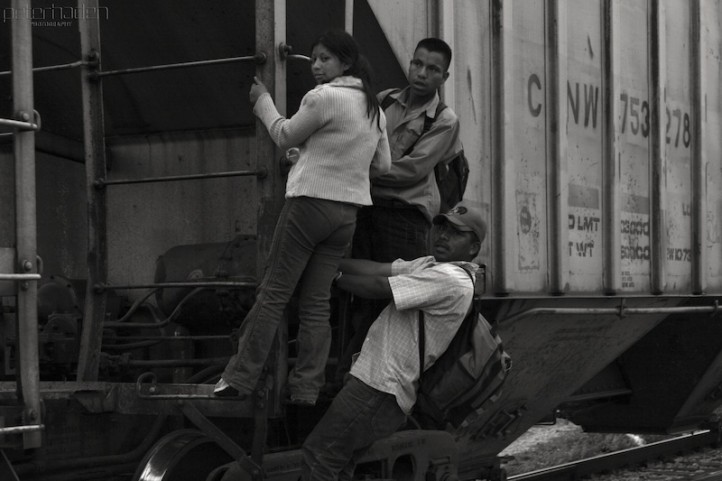by LAURA WEISS
 Central American refugees traveling through Mexico toward the United States PHOTO/Wikimedia Commons
Central American refugees traveling through Mexico toward the United States PHOTO/Wikimedia Commons
The U.S. and Mexican government’s prioritization of border security over human security has had dire consequences that must be discussed at the UN Summit for Refugees and Migration
On September 19 and 20, world leaders will convene at the UN General Assembly for the first-ever Summit for Refugees and Migration. Although focusing primarily on the refugee crisis in Syria, the Summit provides an opportunity to reflect on a humanitarian crisis that persists much closer to our borders in southern Mexico.
In the summer of 2014, 70,000 Central American children arrived at the U.S.-Mexico border, seeking refuge from the life-threatening conditions they faced in their home countries of Guatemala, El Salvador, and Honduras. In response, the U.S. government devised the Southern Border Plan, or Plan Frontera Sur, to stop migrants and asylum-seekers in Mexico before they reach the United States. Since July 2014, the United States has provided the Mexican government with additional funding to increase migration authority staff, as well as new detection technologies and detention centers.
By prioritizing border security over human security, the U.S. and Mexico have both defied international law according to which a person cannot be sent back to a country where they face threats to their life and person. Not until January 2016 did the U.S. government announce any specific refugee program to allow Central American child migrants to remain in the country. In late July 2016, President Obama finally announced an expansion of the program. At the same time, the Obama administration has led raids specifically to deport Central Americans Between January 2014 and October 2015, as many as 83 U.S. deportees were murdered on their return to El Salvador, Guatemala, and Honduras.
The U.S. media has provided little coverage of Central Americans who apply for refugee status in Mexico—and is a topic that deserves discussion at the Summit. In 2015, the Instituto Nacional de Migración (INM) apprehended almost 36,000 people from Central America. But according to the UN Refugee Agency (UNHCR), 3,423 people, mostly from El Salvador and Honduras, have applied for refugee status in the country. The director of the UNHCR office in Tapachula, Chiapas, Perrine Leclerc, said in a meeting in July 2016 that in the first half of 2016, 80% of asylum applications for Central Americans settling in Mexico were accepted. However, according to numerous studies, the INM often fails to inform people they apprehend about their rights to apply for asylum.
In addition to the INM reneging on its duty to inform migrants of their rights to apply for asylum, capacity for intake and processing of asylum applications is disturbingly inadequate. Along the 500-mile border, there are just two UNHCR offices—in Tapachula and Tenosique, Tabasco—while the Mexican refugee agency, COMAR, has only three offices throughout all of Mexico. The numerous migrant shelters in Chiapas, Tabasco, and Oaxaca struggle with overcrowding and poor conditions. This stands in stark contrast to the at least $79 million supplemental aid package that the U.S. government sent to Mexico in 2015 to securitize the border, in addition to the yearly budget for the U.S.-Mexico bilateral security initiative, Plan Mérida, which has included over $2.6 billion in U.S. funding since 2008.
On the Ground in Mexico
The results of Plan Frontera Sur have been called “vertical.” Perversely, the borders themselves remain fairly easy to cross, but further north migration checkpoints and detention centers begin to crop up with more frequency. In July, I traveled to Tapachula and surrounding areas in Chiapas to observe its impact on the thousands of Central Americans with persuasive claims to refugee status in Mexico and the United States.
Foreign Policy in Focus for more
